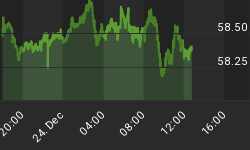
A bookend to some of the contradicting and confusing conditions witnessed these days, 2011 was another important - but confounding, time period in the markets. Many participants were on the lookout for runaway inflation after Bernanke unleashed the second salvo of QE in the back half of 2010. Back then, risk appetites across broad swaths of the market were basically running unbridled, closely correlated and at full-bore. The hard commodity markets were out in front leading the charge, with silver and gold taking their respective calvary positions - and the US dollar horsewhipped on a routine basis by the likes of the Austrians, the monetarists and the survivalists.
With great but tragic irony, the casualty count would rise in Custer-like fashion as expectations were slow to turn with the inflationists - and realizations too far gone that it was their last stand. Hyperinflation? Not a chance. In the second quarter of 2011, disinflationary trends had just begun to take a foot-hold and would ride roughshod over the inflationists for the next three years. Blinded by their biases in battle, the inflationists failed to look down at their peripheral bearings and realize the US dollar was actually putting in an important low and long-term yields were cresting at the top of the wave. What followed was a long battle of attrition, waged in the face of a gathering quantitative tide - the very element and condition the inflationists expected would unleash hell and win their war.
Today, with the quantitative reservoir now brimming at the Fed's flood gates, we can still hear and see the ghosts of 2011 walking and squawking among us. Bereft of capital, but still haunting us with their battle calls of inflation is coming - inflation is coming! For those that rode the disinflationary trends on the short side of commodities and precious metals from Q2 2011 to Q2 2013, the last year has been an awkward and long transition of alignments with their loss cause. From our perspective, another pulse of inflation has been moving through the system as retracement trends in the US dollar and long-term yields converge with complete retracements of the ill-timed calvary mounts of silver and gold in 2011. The bottom line from a macro point-of-view is that real rates should continue moving lower with the US dollar as inflation trends find another foot hold to climb up on.
A few things worth watching:
- We have been bearish on the US dollar index since last June and have used the 1994/1995 profile as a guide for the prospective move to the bottom of its long-term range. The dollar bounced with classic bear market abandon in the back half of last week as Draghi jawboned the euro and the index approached the 50% retracement level of the move from Q2 2011. We expect downside pressures to greatly accelerate if and when 78.80 is breached.
-
Because precious metals have failed recently to capitalize on dollar weakness, many participants have become disheartened with the lack-luster performance in precious metals and have looked for another downside leg to commence. The same is true with respect to gold and silver's other motivating propellent - long-term yields. Hindsight 20/20, we believe the bigger picture narrative puts these dynamics into a much clearer context and shows how these respective moves since 2011 have converged again today and confused many participants intuitions looking at the respective correlation tea leaves.
-
As mentioned earlier, the US dollar and long-term yields put in divergent pivots in 2011 with the dollar making a long-term low and yields cresting with historic correlation extremes across asset classes. Since then, yields and the US dollar have meandered a polarized path away from the inverse extreme - with negative correlation conditions diminishing over time. Since the start of the year, positive correlation conditions have strengthened between the dollar and 10-year yields as they both have recently found tentative support around their respective 50% retracement levels. For 10-year yields, we would expect downside pressures to increase below ~ 2.55% and still expect long-term market conditions to nurture the downtrend that began in January.
- Since making a cycle low last summer, silver has been trading in a narrowing range and finding support around the complete retracement level of QE2's forsaken charge. Despite flirting with that support, silver and gold both went into this week with coiled positive momentum set-ups that without sustained release we continue to feel builds greater potential energies forward.
Because of the broad and complicated structure of the prospective long-term yield top, precious metals have languished in a narrowing range as the US dollar converges with what we would expect is a more typical correlation environment with major cyclical pivots in precious metals and long-term yields.
Although still low by historical standards, we continue to work from the perspective that by the end of 2013, 10-year yields became stretched to a relative extreme and were marking the top of a prospective long-term range between 1.5% and 3.0%.
Unlike its secular exhaustion peak in 1981 characterized by a relatively swift pivot lower, 10-year yields have been making a process top with the broader equity market structure expressed in the SPX. While higher beta indexes as well as the yield dependent financial sector have been more closely correlated with the eroding yield backdrop in the market, we still expect the SPX to eventually follow suit and complete a cyclical top this year.

































